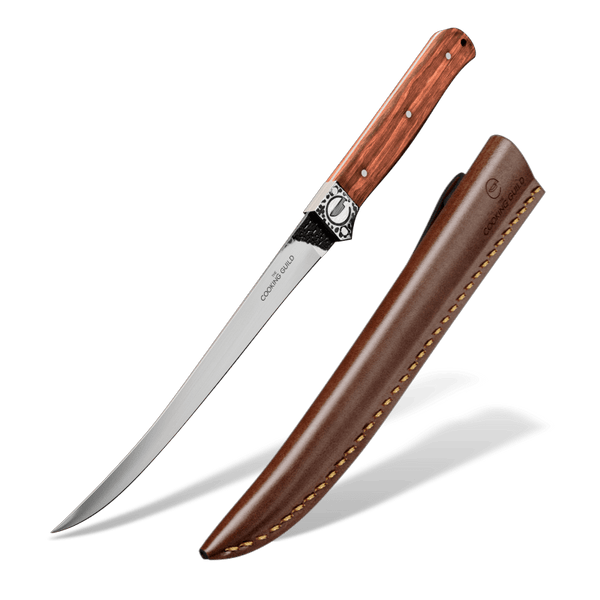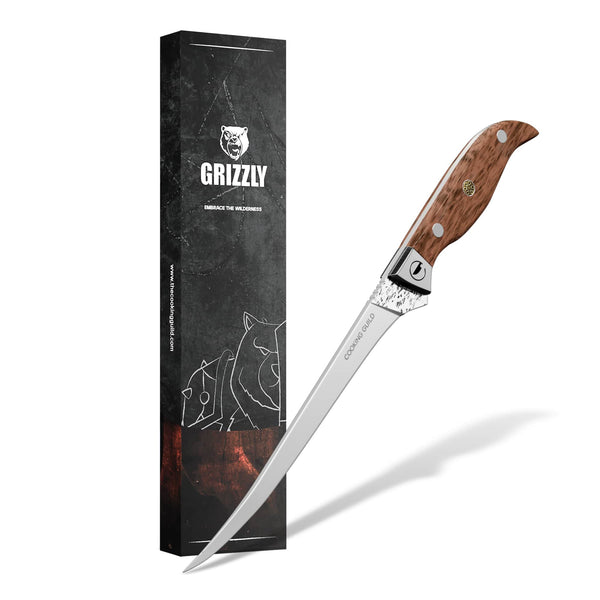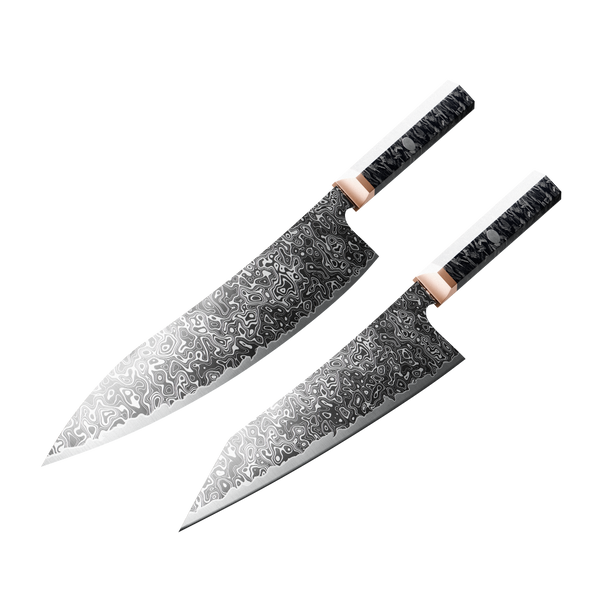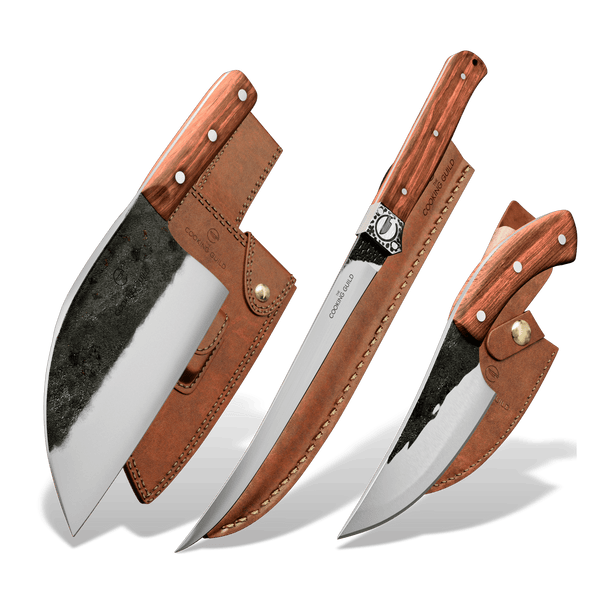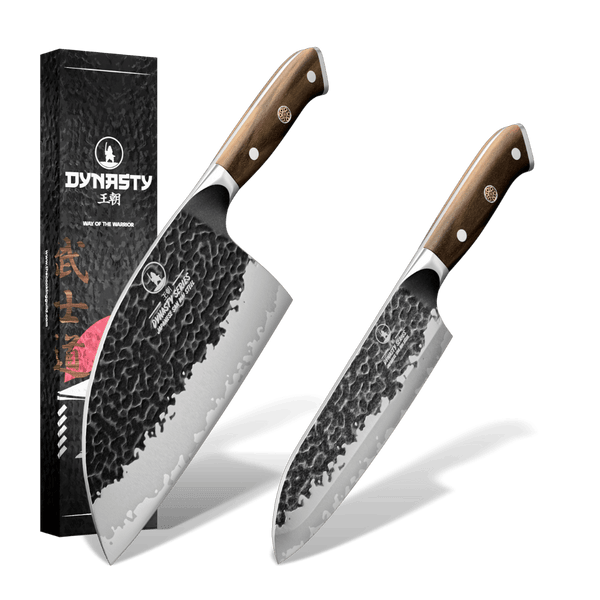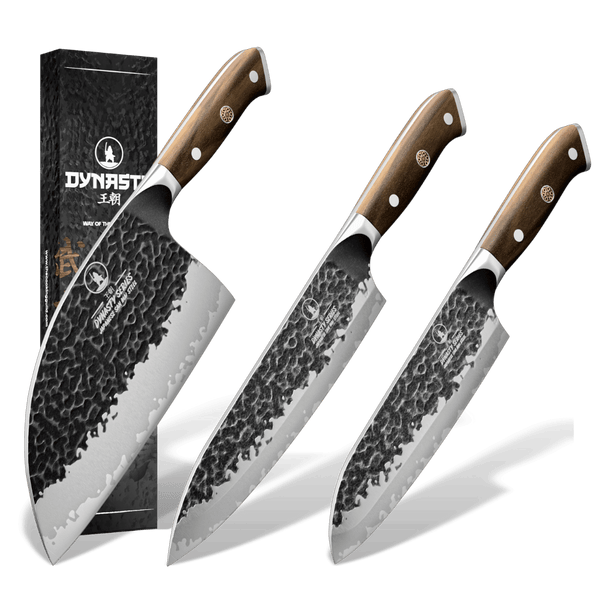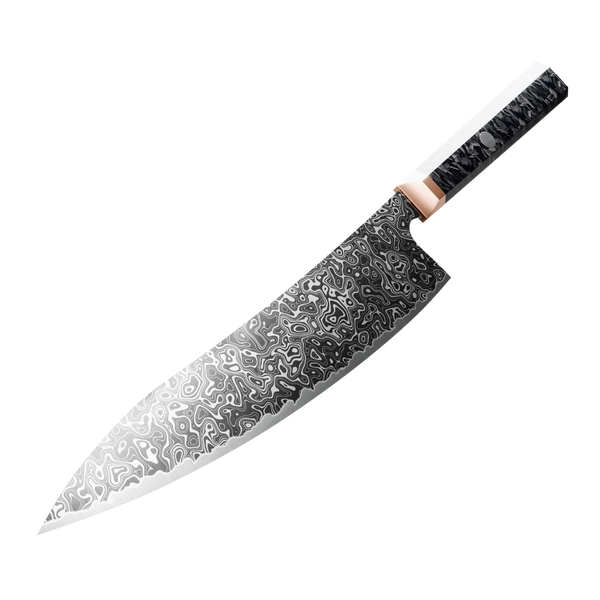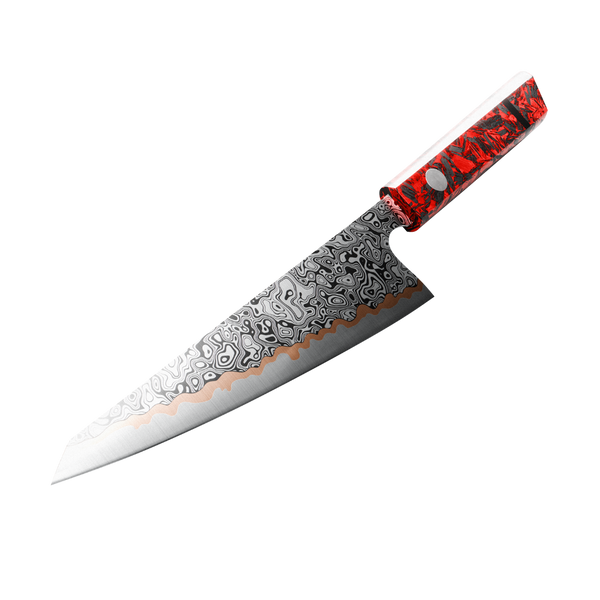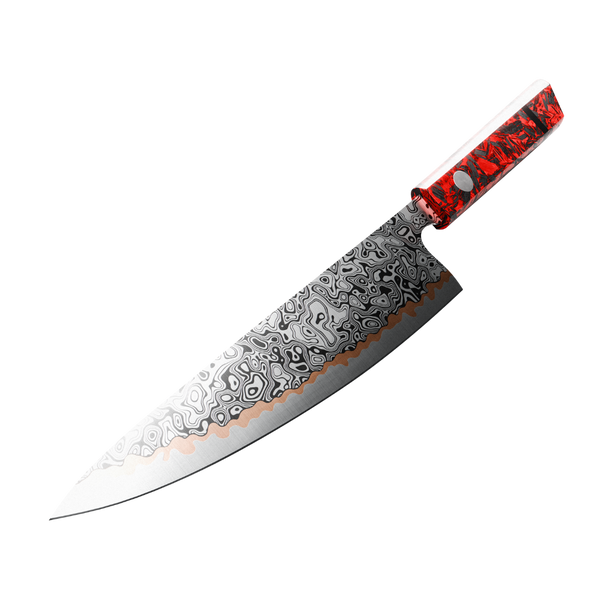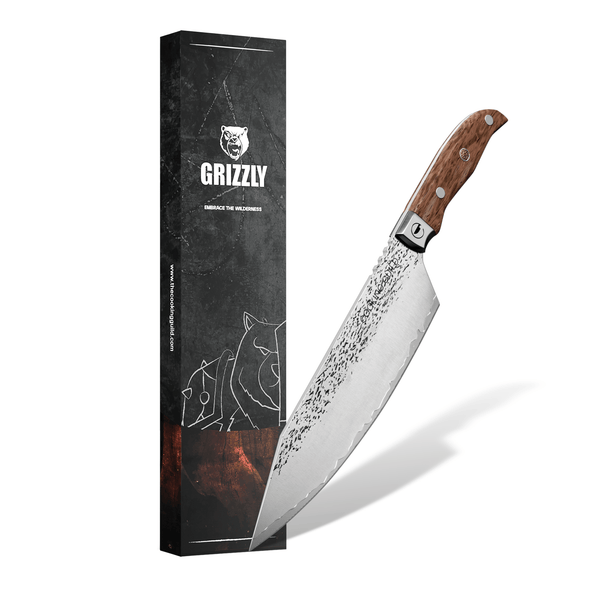Slicing a ripe tomato into neat, paper-thin slices or breaking down a cut of beef isn’t just skill—it also depends on the right knife in your hand to build efficiency. For chefs, both professional and aspiring, an exemplary cooking knife doesn’t just make meal prep simpler; it can define one’s relationship with food. While kitchen gadgets come and go, the chef's knife remains a steadfast essential, acting as the extension of a cook's hand and creativity.
The Anatomy of Chef Cooking Knives
Every blade tells a story, forged from steel, honed for sharpness, and crafted for balance. Understanding the anatomy of chef cooking knives can transform both the results on your plate and the experience at the cutting board.
- Blade: Usually made from stainless steel, carbon steel, or high-tech alloys, the blade determines sharpness, durability, and ease of maintenance.
- Edge: Whether a Western-style sharp V, a Japanese razor-fine angle, or a granton (scalloped), the edge affects both the types of cuts and the knife’s longevity.
- Handle: Comfort, grip, and balance all stem from the handle, with materials ranging from wood and plastic to composite.
- Tang: The part of the blade that extends into the handle. A full tang boosts durability and balance.
Why Knife Quality Matters
A poorly made knife can ruin ingredients and tire out your hands, while a well-engineered one glides through produce and proteins with little effort. Durable steel, precise craftsmanship, and ergonomic balance all feed into greater efficiency, safety, and even creativity.
Imagine preparing a dish where herbs are bruised not chopped, onions crushed instead of diced, or meat torn apart by a dull blade. Every aspect, from safety to the actual flavor and texture, is influenced by the blade that meets the produce.
Essential Knives Every Chef Should Own
While it’s easy to be mesmerized by entire knife blocks, complete with various sizes and types of cutlery, only a handful of knives are truly indispensable for most cooking needs. Here’s a closer look:
Chef's Knife (Gyuto or Western Chef's Knife)
Regarded as the most versatile tool, this knife manages slicing, dicing, chopping herbs, and even light butchery. Its length (usually 8-10 inches) and gently curved tip allow for rocking cuts and precision slices.
Paring Knife
For smaller, more intricate tasks—peeling, trimming, deveining shrimp, or segmenting citrus—the paring knife offers maneuverability where a larger blade feels clumsy.
Bread Knife (Serrated Blade)
Think crusty loaves, ripe tomatoes, or even cakes. The serrated edge of this knife ensures neat slices without crushing delicate ingredients.
Utility Knife
Sitting between a chef’s and paring knife size-wise, this mid-sized blade often fills in for tasks that need a little more precision than the chef's knife but aren’t suitable for a tiny blade.
Boning or Fillet Knife
A thin, flexible blade slips around bones, trims fat, and can even portion fish with minimum waste.
Summary Table: Knife Types and Typical Uses
| Knife Type | Typical Use | Blade Length | Specialty Feature |
|---|---|---|---|
| Chef’s Knife | Mincing, slicing, chopping | 8–10 inches | Curved edge, wide blade |
| Paring Knife | Peeling, trimming, fine slicing | 3–4 inches | Small size, pointed tip |
| Bread Knife | Cutting bread, tomatoes, cakes | 8–10 inches | Long, serrated edge |
| Utility Knife | Sandwiches, prepping small veg | 4–6 inches | Slim, straight or slightly curved |
| Boning/Fillet | Deboning, fish filleting | 5–7 inches | Narrow, flexible, sharp tip |
Comparing Western and Japanese Chef Knives
Two world traditions dominate premium knife conversations: the robust, heavy German/French styles and the nimble, razor-thin Japanese blades.
Western knives are prized for versatility and sturdiness. The bolster (thick junction between blade and handle) provides weight and protection for fast chopping. Sharpened at a broader angle (typically 20°), these knives excel with tougher tasks and withstand more abuse.
Japanese knives often show off harder steels and thinner profiles. The acute angle (12–16°) delivers legendary sharpness but needs a bit more skill and care. Blades like the Gyuto (Japanese multi-purpose chef’s knife) or Santoku (another all-rounder with a flatter profile) are lauded for precise work with vegetables and delicate proteins.
Both styles can build a strong foundation and anchor a kitchen. Many professionals blend them, enjoying the robust confidence of Western blades for rougher prep and the fine, feather-light touch of Japanese knives for intricate slicing.
Knife Materials: What’s in a Blade?
Not all steel is created equal. The material affects how often you’ll need to hone or sharpen and how well the blade resists rust and stains.
- Stainless Steel: Common and low-maintenance, it resists rust and corrosion, though some blends don’t hold an edge long.
- High-Carbon Steel: Exceptional sharpness and edge retention. However, these blades need careful drying to prevent oxidation and discoloration.
- Powdered Steel: Modern technology brings ultra-fine, highly uniform grains, resulting in strong edges prized by top knife makers.
Professional kitchens often rely on a mix, selecting easy-care stainless for heavy use and ultra-sharp carbon or powdered blades for precision finish work.
The Importance of a Good Handle
Handles and cutlery can be overlooked, but they matter more than you might think. Fatigue, grip security, and alignment all hinge on this often-personal detail.
- Wood: Warm feel, but needs more maintenance.
- Plastic/Composite: Less beauty, more durability and dishwasher safety.
- Metal: Looks striking but can get slippery if wet.
Feel matters most. What works for small hands may not be comfortable for large palms. In stores, picking up several and miming some chopping can make a world of difference.
Sharpening, Honing, and Caring for Your Knives
Even the best knives dull with use. A razor edge requires a little daily care and periodic in-depth attention.
- Honing Rod: Straightens the edge between uses (doesn’t remove metal, just realigns).
- Whetstone/Sharpening Stone: Every 2–6 months, use to true the edge for peak performance.
- Professional Sharpening: For those lacking time or confidence, occasional professional attention keeps knives in their prime.
Tip: Washing by hand and drying immediately prevents rust and extends both blade and handle lifespan.
Brands to Know
- German/French Heritage: Wüsthof, Zwilling J.A. Henckels, Sabatier
- Japanese Excellence: Shun, Global, MAC, Miyabi
- American Innovation: Bob Kramer, Lamson
Budget options have improved over the years, too. Modern metallurgy means even mid-range knives can hold a keen edge.
Selecting the Right Knife for You
A knife is personal. What feels balanced for one cook could be awkward or heavy for another. Some prefer the noticeable heft of a German blade, while others work best with the feather-light profile of a Japanese chef’s knife.
When shopping:
- Test the grip: Handles should feel secure, not slippery.
- Check balance: A well-balanced knife makes every task easier.
- Consider maintenance: How often are you willing to sharpen?
- Think about your cooking style: Daily meal prep or elaborate culinary projects?
A single quality knife, along with the right cutlery, can outperform a whole drawer of cheap alternatives.
Investing in Your Skills and Equipment
Skillful knife work is the difference between professional-looking dishes and uneven, clumsy cuts. Once in possession of a quality knife, investing a little time to improve your technique pays off in efficiency and enjoyment.
Chopping an onion or slicing sashimi doesn’t have to be a slow, awkward process. Good knives transform both the food and the experience. Some chefs find that learning about blade construction and steel types inspires them to build their skills, deepening their appreciation for their craft.
Knives connect hand to ingredient, tradition to innovation. In the kitchen, a good knife isn’t just a tool—it’s a partner in creativity and precision, making meal preparation safer, faster, and infinitely more satisfying.

